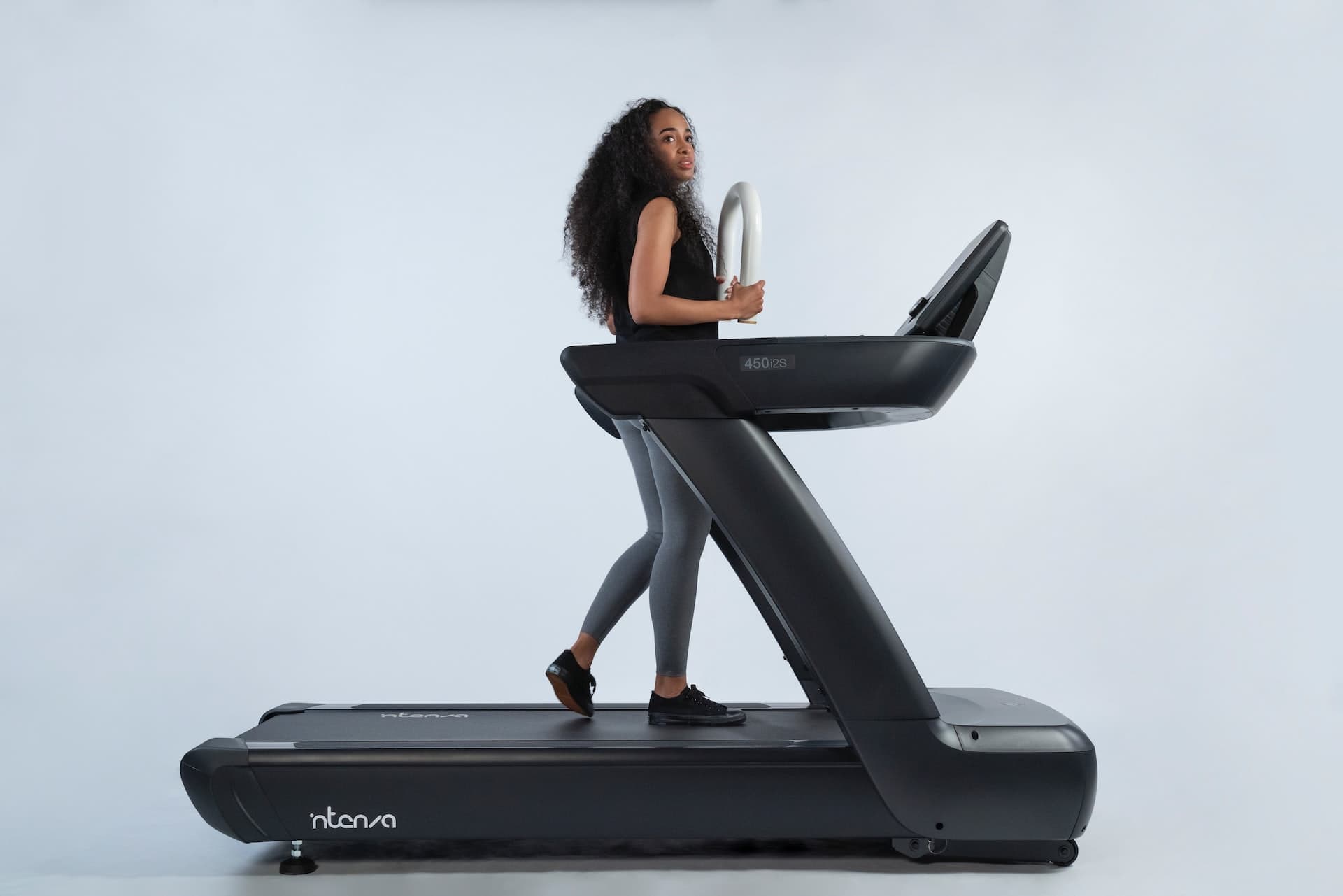

Technically, you can do what you want if you are at home. If you are at a gym or using someone else’s equipment, it’s best to ask about their preference. But what are the benefits and risks of going barefoot or socks only on the treadmill?
Why You Should Wear the Shoes
Wearing shoes while running or walking on a treadmill has many benefits. There are different shoes for different types of exercise purposes, but you don’t need to run out and grab one of each kind. You DO need to understand the benefits of wearing shoes, and the right kind, during your treadmill workout session.
Impact Absorption
The movement of running on a treadmill greatly impacts your feet, ankles, knees, and calves at the bare minimum. Wearing the right pair of shoes helps absorb some of that impact. That means there is less direct pressure on your lower body.
Provides Cushion for the Pushin’
Running shoes are designed differently than, say, shoes for tennis or volleyball. Runners have basically one movement, and that is forward. Sports players have to turn quickly, shuffle side-to-side, etc. Those who run, run forward. Wearing a well-padded shoe allows you to push forward without feeling like you’re digging your toes into the pavement.
Get a Grip on the Belt
The bottom of your shoes matters more than you think. With good running shoes, you know you have a much lower chance of slipping and falling during your run. Even while you are pouring sweat all over the belt, your shoes will grab on much better than slippery socks or sweating bare feet.
Arch and Ankle Support
You have to get the RIGHT kind of shoe, and that includes how it supports your foot. We all fall into three categories of arch support: neutral (the most common), flat-footed, and high arch. Wearing the right shoe will support your arch and ankle, eliminating injuries like Achilles tendonitis, Plantar Fasciitis, shin splints, or ankle sprains and strains.
Consider the following qualities when picking out the best show for you:
- Lightweight
- Breathable to eliminate sweating and hot feet
- Flexible at the ball of the shoe to allow the best movement
- Support for YOUR arch type
- Comfortable
- Designed for running- not sports
Take the Plunge and Unlace Your Shoes
Now you know the benefits of wearing shoes on your treadmill run, but what if you want to consider NOT wearing shoes? That is an option too. Let’s take a look at the flip side of the shoes or no shoes dilemma.
Building Muscle
When you wear shoes all the time, you don’t allow those supported muscles to work and get stronger. Going barefoot or in socks only pushes you to use all the muscles in your feet and calves. It also helps to strengthen existing muscle use to continue building on what you already use daily.
Balance
Have you ever seen a gymnast on the balance beam? They are always barefoot so they can feel the beam (and lack thereof) and keep their balance. You won’t feel an uneven path if you wear shoes while running. You, therefore, can’t correct the placement of your feet in time to avoid twisting an ankle or losing your balance. Going shoeless lets you feel the belt under your feet and make split-second placement changes.
Less Impact
Going barefoot stops you from landing on the heel of your foot like you would when wearing shoes. Landing on the balls of your feet instead of hitting harder on your entire foot eliminates that ankle impact. This movement helps propel your body forward and, in turn, reduces the stride of each step. Not landing fully on your foot means less impact on your body and less potential injury.
Precautions of both Shoes and No Shoes
There is no right or wrong answer on whether or not you should wear shoes on a treadmill. If you walk, the impact will be much lower than if you go for a run, so you could shuck the shoes.
If you always wear shoes for any activity, don your favorite Kicks and hit start on the treadmill. Either way, there are concerns with either option you choose.
Risks of Wearing Shoes
Wearing shoes while running the belt supports your ankle and arch, but providing such support COULD lead to weakened bones and muscles. That means the protection you seek could cause soreness and twisted ankles during other activities because your body isn’t used to supporting itself. It relies on the side of the shoe that isn’t there.
If you don’t get the right shoe, you risk sore feet and blisters because they rub the wrong way or are too tight. I used to go for long mild-paced walks, and within 30 minutes, my feet were tingling and numb. I couldn’t figure out why, and I eventually dropped the shoes, and it went away.
Risks of Going Barefoot or Shoeless
Whether socks or bare feet, you lose a lot of grip support. Sure, you automatically use your toes for that, but on a flat surface like a treadmill, you run the risk of no grip or friction. That leads to a bigger possibility of slipping.
Your feet are going to sweat, and that sweat leads to slippery surfaces, and that slippery surface leads to falling down or stubbing a toe.
If you have diabetes, it is NOT recommended you do anything without shoes, according to many doctors.
Blisters and burns are other risks you take by not adding the protection of shoes. The longer you run, the hotter the belt gets. If you are running barefoot, you will feel the burn…and not in a good way.
If you only wear socks, you will go through socks like crazy. The wear-and-tear shoes are designed to take do not carry over to your socks unless you use specially designed socks for running.

